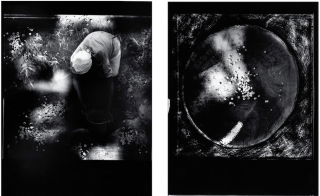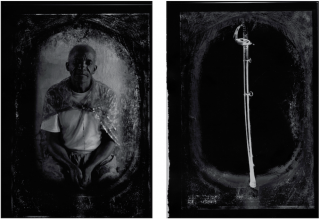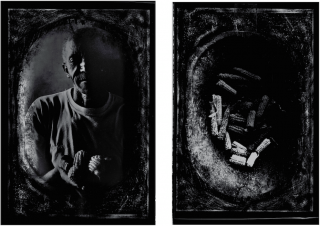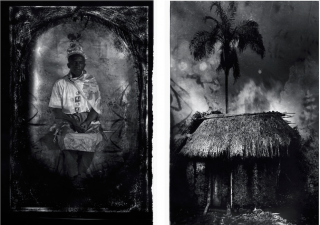Eustaquio Neves




Eustaquio Neves (Juatuba, Minas Gerais, Brazil, 1955). 'The diptychs and photographs in this series are based on the world inhabited by the character Crispin: his everyday life, the religious manifestations and the means of survival that prevail in his village. In order to create a picture of this world I have used symbolic elements, which are as important as the portraits. One such example is a wooden tool—the gamela—traditionally used to collect corn during the harvest, which I have used to evoke the plantations on which his community has always worked. Gamela wood is also used to make the sword that is carried in religious manifestations of Nossa Senhora do Rosário as a symbol of resistance. Crispin himself carries this sword when he walks at the head of the procession, scraping the floor with it as if opening the path for the religious cortège. Likewise, I use gamela wood to create the frames for my Crispin portraits. The photograph of the young girl Angela, who is related to Crispin, includes a container or platter—the bateia—normally used in diamond mining, the main regional source of income. The bateia in the photograph holds a flower species known as 'everlasting flower', which can only be found locally. As diamonds become increasingly scarce, the cultivation of these flowers is becoming a financial alternative for some families.
If you require further information, please contact us at: enquiries@ivorypress.com
